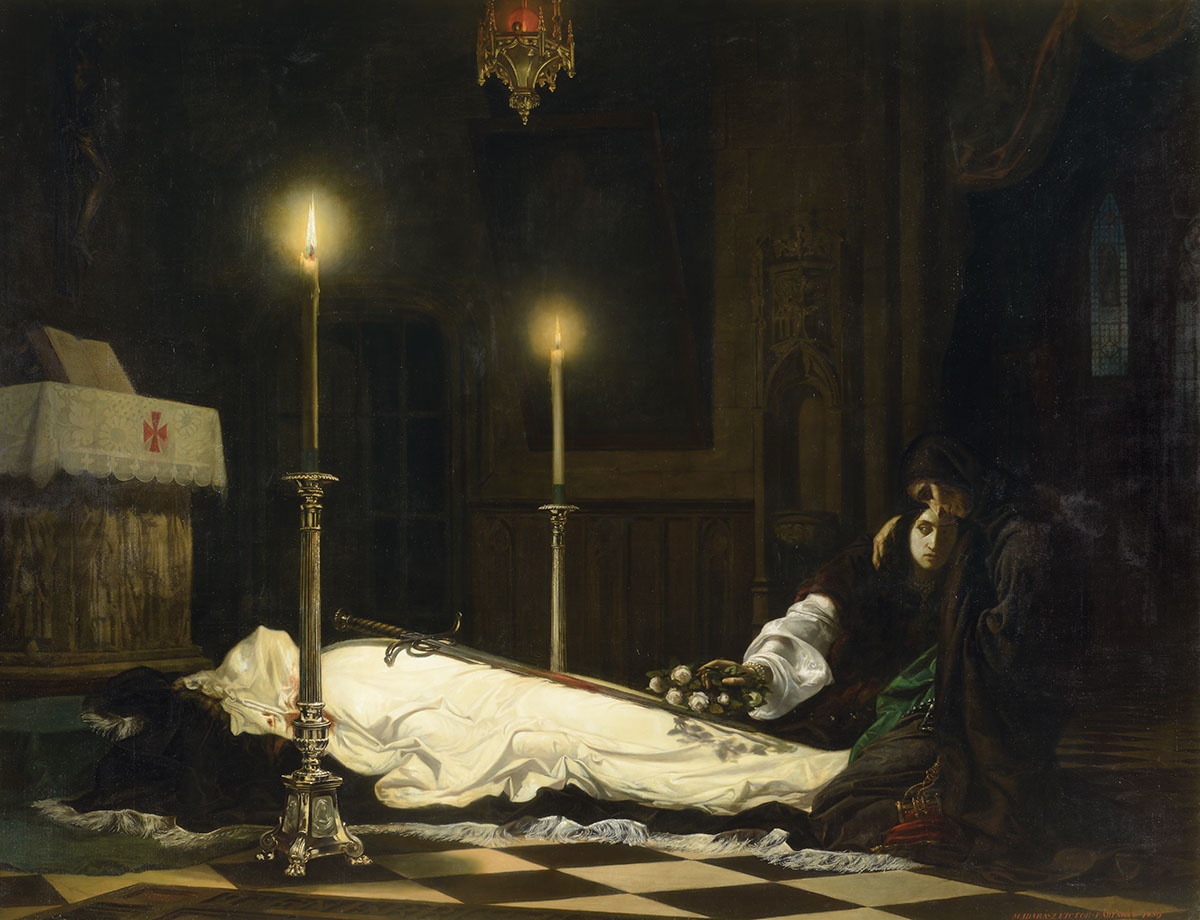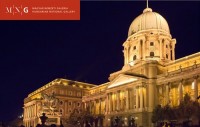The majority of Viktor Madarász’s works were painted during the nearly 20 years he spent in Paris and reflect the influence of French romantic painting. László Hunyadi, the son of the great defeater of the Ottomans János Hunyadi who thus became a national hero, was ordered to be killed by Vladislav V. Young Hunyadi enjoyed widespread popularity among the Hungarians, so he was seen as a rival to the young, inexperienced Vladislav V who served foreign interests. The Hunyadi theme was very popular in the history painting of the century; László Hunyadi’s farewell and his dying were eternalized by many and in various ways. The Madarász painting captures a very special moment, the wake. Next to the body, covered by a white shroud are his mother Erzsébet Szilágyi and his bride Mária Gara, their movements and facial expressions mirroring profound grief. Due to the theme and especially the dramatic rendering, the picture became a symbol of national mourning over the suppression of the war of liberation of 1848–49.
en

